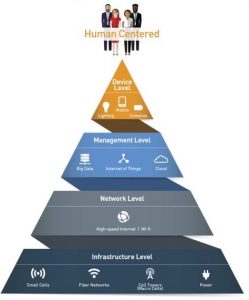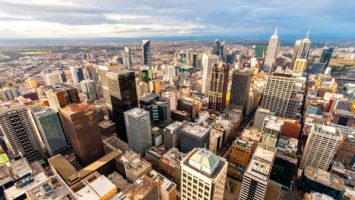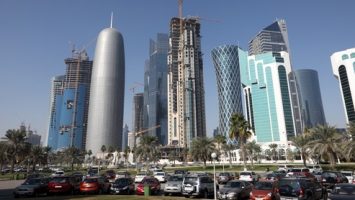
US cities are finally getting excited about the potential impact of smart city technology to help them solve challenges related to the operational complexity of a managing a municipality such as transportation, energy efficiency, healthcare and more.
Most of the output being showcased is focused on the collection and management of data. So sensors and cameras on kiosks and LED lights are getting big headlines, which is important and necessary. These are tangible objects that residents can physically see and touch. And their presence means that data on activity and environmental elements are recorded and shared. Ideally, city leaders use and share this data securely to make smarter decisions.
Cities like Chicago, San Diego, Dallas and others are making major advancements in their smart city activity. But the best laid Internet of Things (IoT) and data plans are a house of cards if they are not moving forward in parallel with investment in the invisible infrastructure that powers it, including wireless network and utility infrastructure.
And while there are plenty of industry conferences, webinars and thought leadership on the subject of 5G, small cells and grid modernization, there is less of a buzz among the general smart city leadership about the massive changes that are forthcoming in these two foundational sectors.
5G will change everything
5G is the next generation of mobile broadband, increasing speeds by up to 100 times and providing the most reliable connectivity ever. This new wave of technology is a critical component of the promise of IoT. Devices will be able to connect to one another instantly. And they will need to, as there will be 20.8 billion “things” connected by 2020.
How does this play out in our daily lives? Here are a few examples:
- Advances in healthcare will be enabled by patient monitoring devices that connect in real time to share data with healthcare practitioners, allowing patients to track blood pressure or heart rates via a mobile phone.
- Transportation in cities will drastically improve as manufacturers integrate V2X (vehicle-to-everything) technology that enables autonomous mobility as well as increased communication between traffic signals and even emergency responders. This is all enabled by 5G networks.
- Smart homes can include everything from security monitoring to energy usage, enabling the home owner to receive information and make choices all from their mobile phone, even remotely. These devices are all connected and 5G has the potential to accelerate this proliferation.
5G deployment is critical to the future of smart cities. And while some cities and states are wisely aligning their policies and regulatory issues to make way for this new world order, others are lagging behind. Some cities are still caught in the complex web of right-of-way and permitting issues which deters the deployment of small cells, which densify mobile networks to power 5G. Ultimately, this inhibits them from paving the way for greater connectivity. This Connectivity Checklist provides quick advice on how to align local policy with the current era of innovation.
Utility Modernization is Paramount
Utilities serve as the backbone of any modern city. And while these are well-established organizations, there is no incentive to remain in a “business as usual” mindset. This traditional infrastructure must advance, improve and iterate to keep pace.
- Utilities should integrate design thinking principles which can help them more closely match their business offerings with customer expectations. Being able to adapt quickly to a changing environment is important to stay relevant in a rapidly evolving marketplace.
- Data collection on system performance can both identify challenges (i.e. the need to modernize as well as opportunities (i.e. identification of ways to reduce energy spend as well as costs). Responsibly securing and sharing this data also provides a potential for utilities to serve as platforms for entrepreneurs and innovators to design transformative products and services that improve quality of life and produce environmental benefit.
- Technologies such as Augmented Reality (AR) are drastically improving the ability of utilities to improve operational efficiency, support a mobile workforce and deploy information in real time. Whether by laptop, tablet or mobile phone, AR can help isolate outages, identify hot spots in the field, pinpoint power issues or even access remote human expertise.
These are just a few of the many available benefits for cities to understand the importance of and invest in their urban infrastructure. And while the glamour of sensors and the devices will continue to turn heads on the smart city runways, it is the steady work to accelerate mobile broadband deployment and utility modernization that will enable true change for cities. With these solid foundations in place, cities will be well positioned to truly realize the benefits of digital transformation for the benefit of all their residents and visitors.



